Abstract
The National Institute for Occupational Safety and Health (NIOSH) established its Alaska Field Station in Anchorage in 1991 after identifying Alaska as the highest-risk state for traumatic worker fatalities. Since then, the Field Station, working in collaboration with other agencies, organizations, and individuals, has established a program for occupational injury surveillance in Alaska and formed interagency working groups to address the risk factors leading to occupational death and injury in the state. Collaborative efforts have contributed to reducing crash rates and mortality in Alaska's rapidly expanding helicopter logging industry and have played an important supportive role in the substantial progress made in reducing the mortality rate in Alaska's commercial fishing industry (historically Alaska's and America's most dangerous industry). Alaska experienced a 46% overall decline in work-related acute traumatic injury deaths from 1991 to 1998, a 64% decline in commercial fishing deaths, and a very sharp decline in helicopter logging-related deaths. Extending this regional approach to other parts of the country and applying these strategies to the entire spectrum of occupational injury and disease hazards could have a broad effect on reducing occupational injuries.
Full text
PDF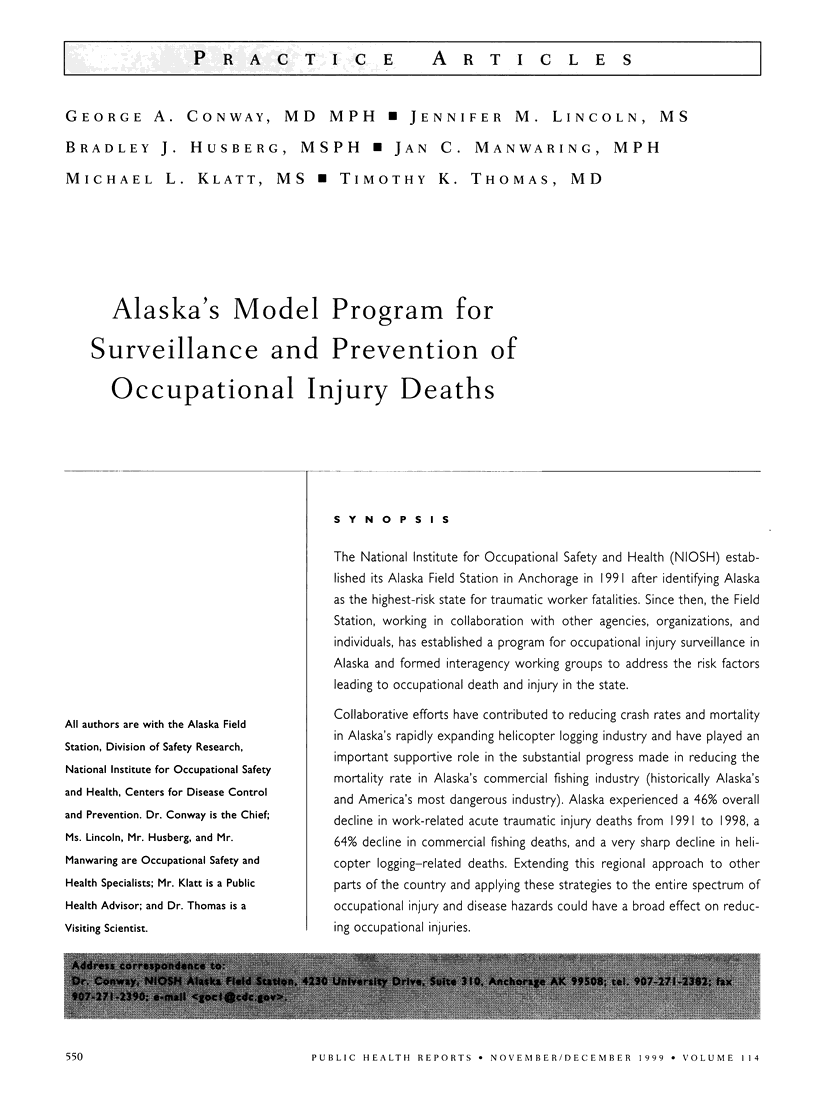
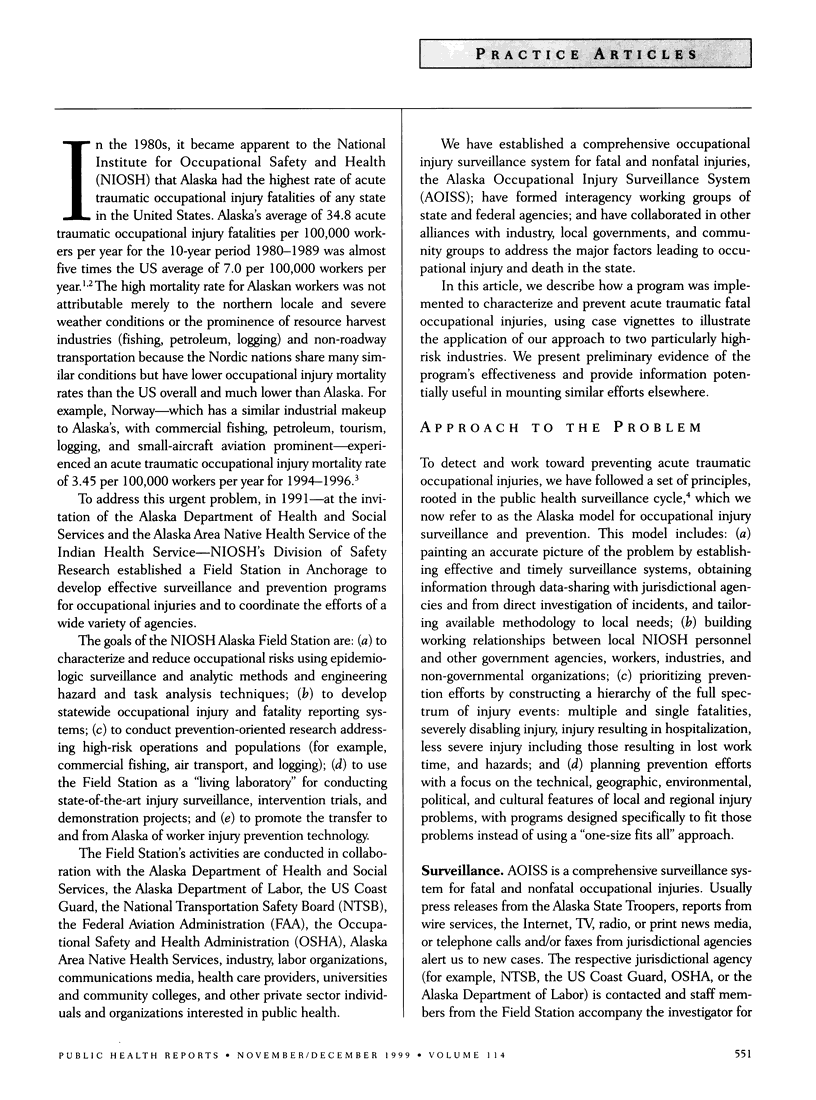
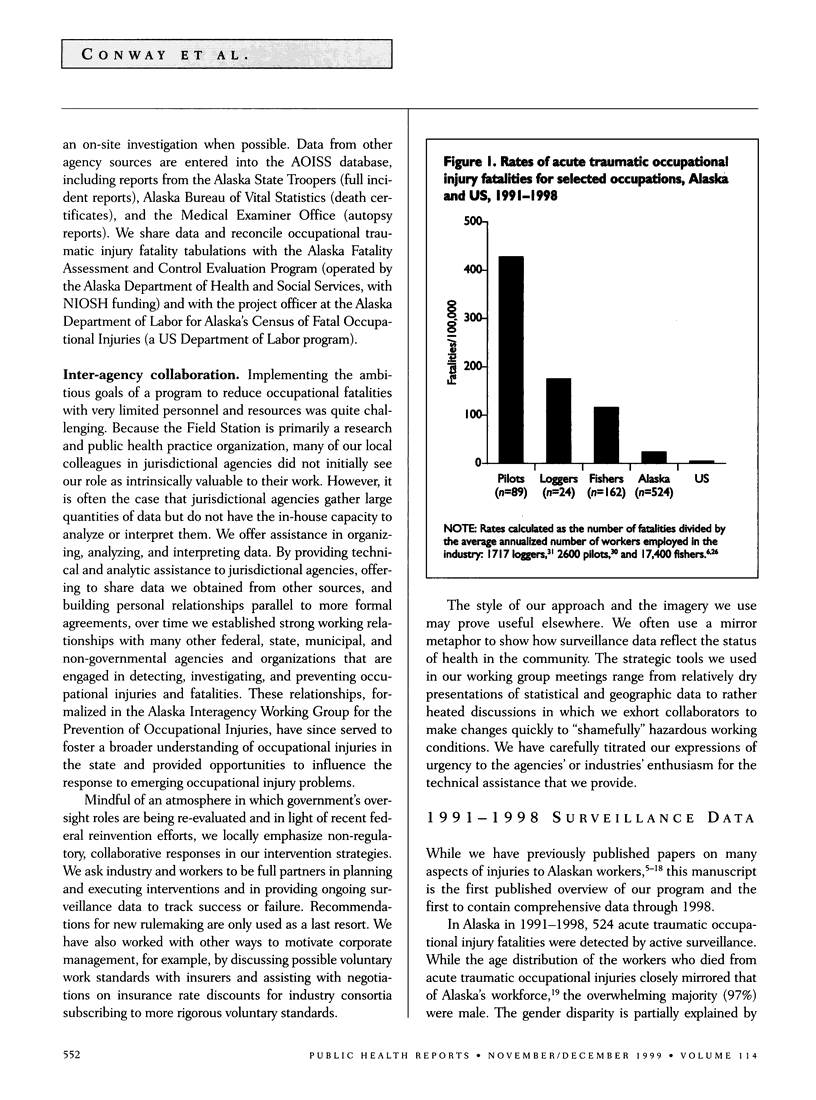
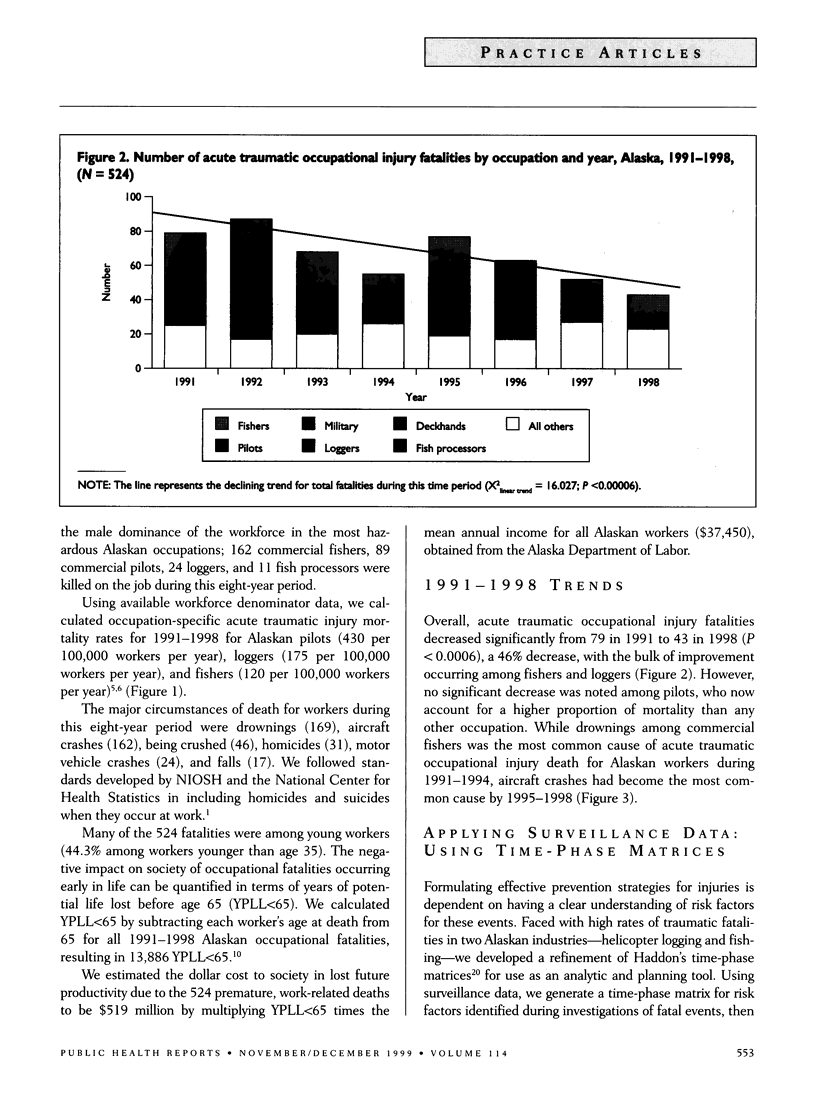
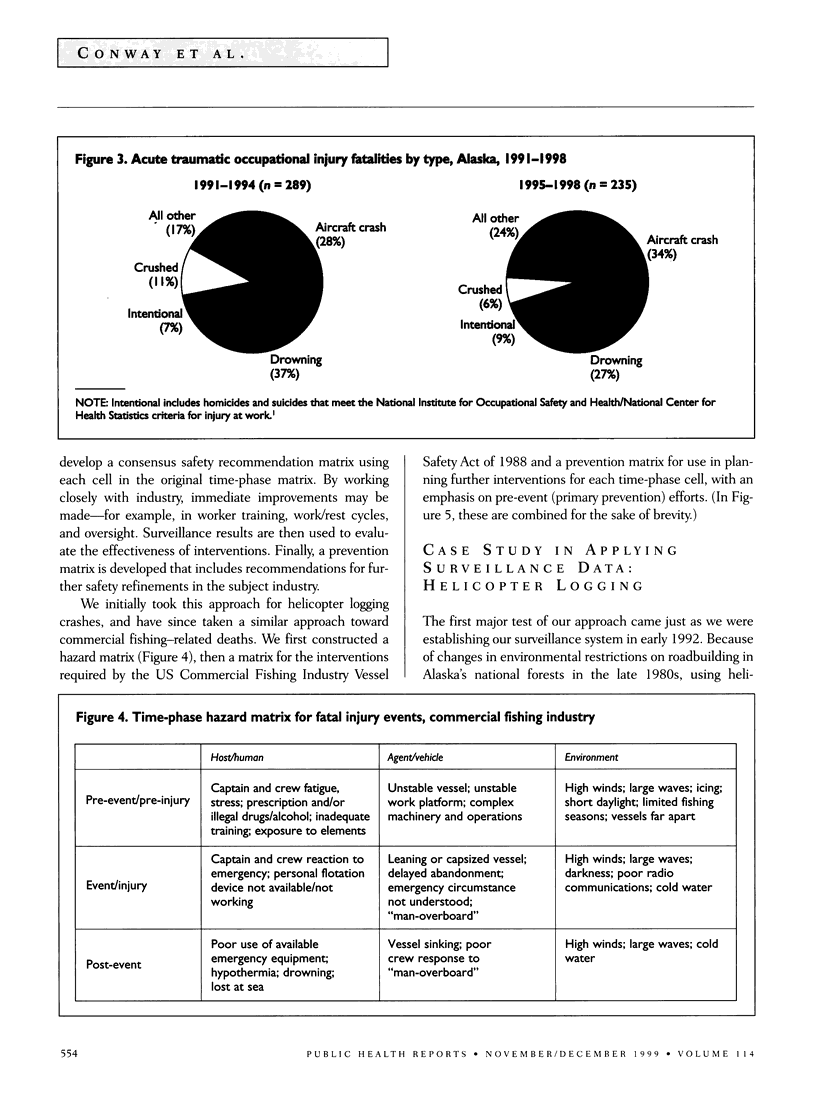
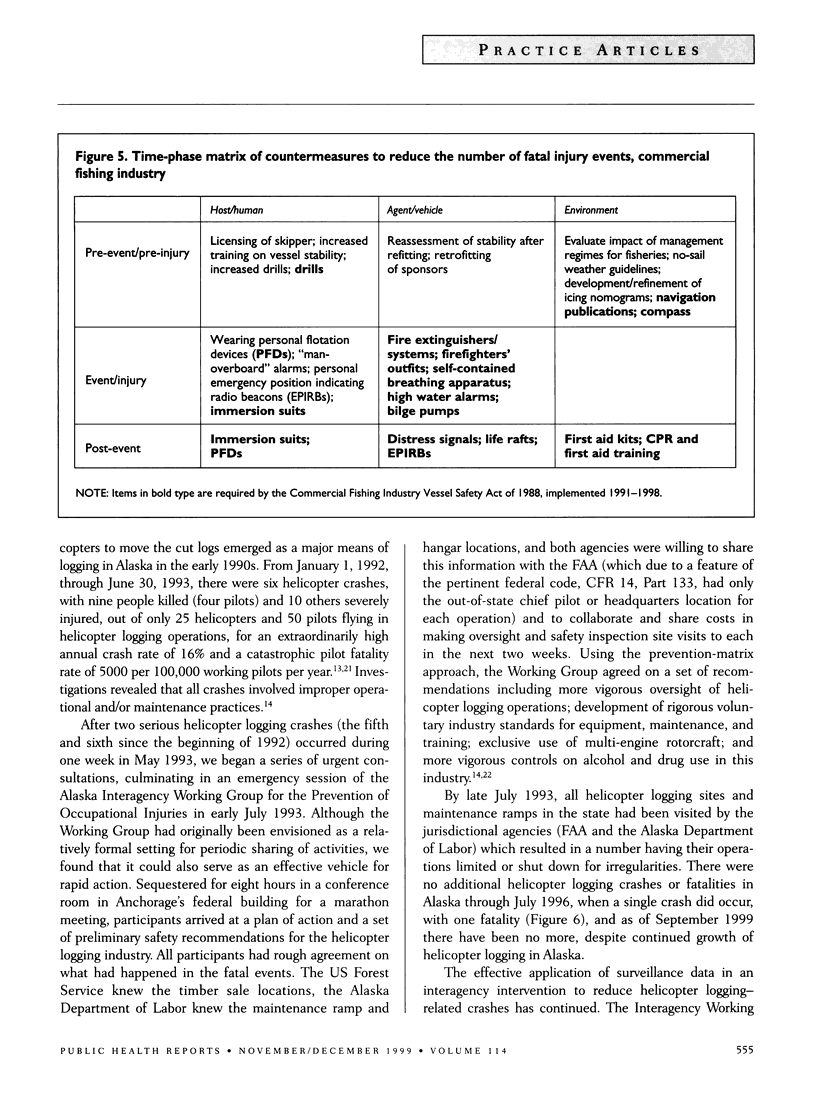
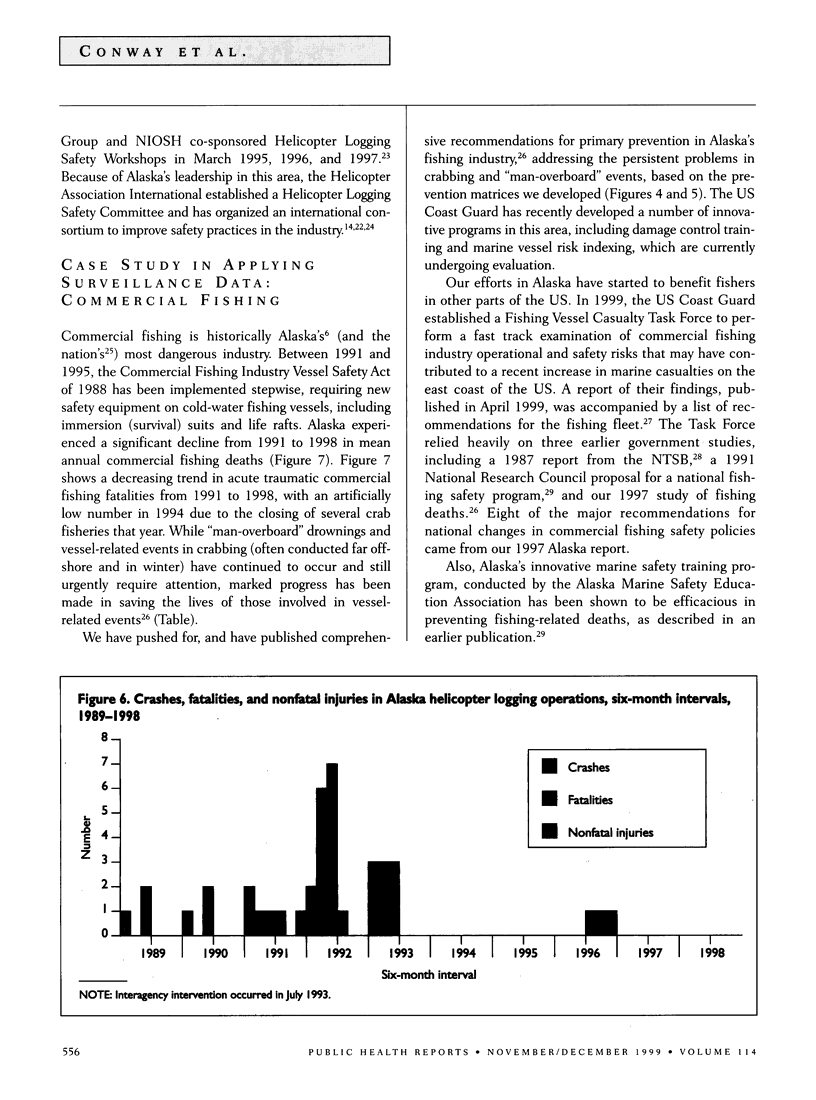
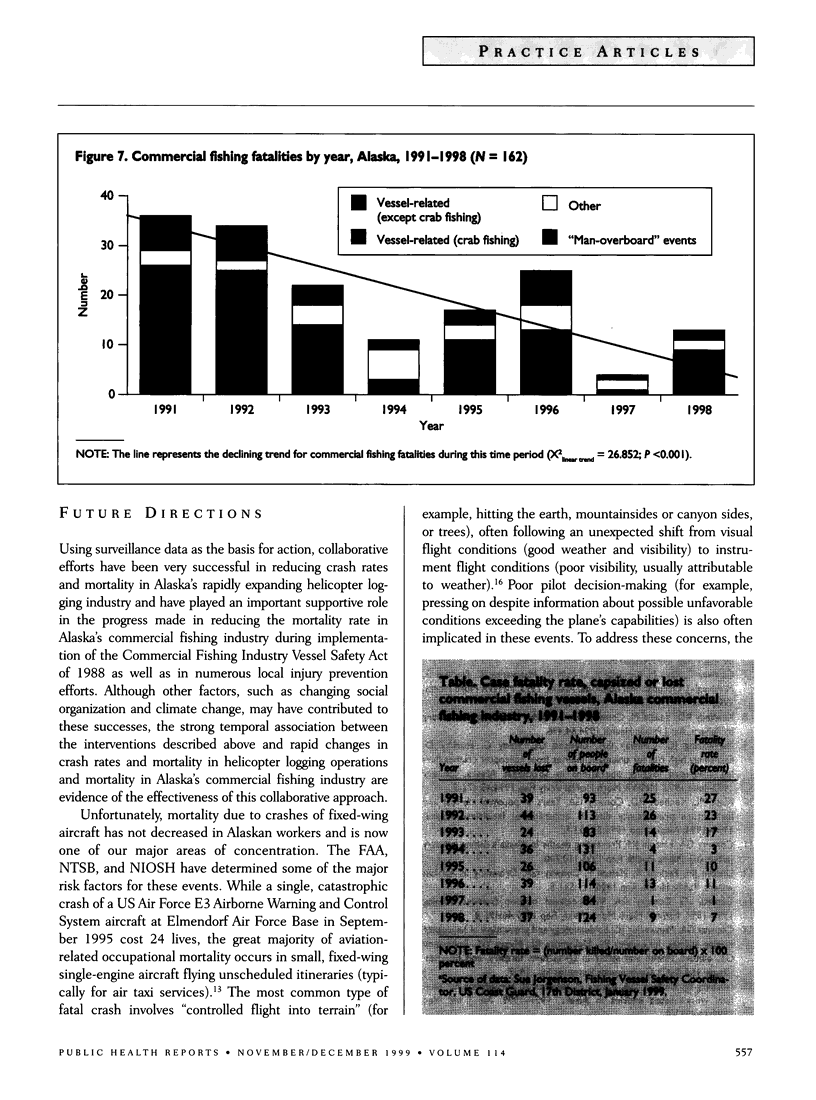
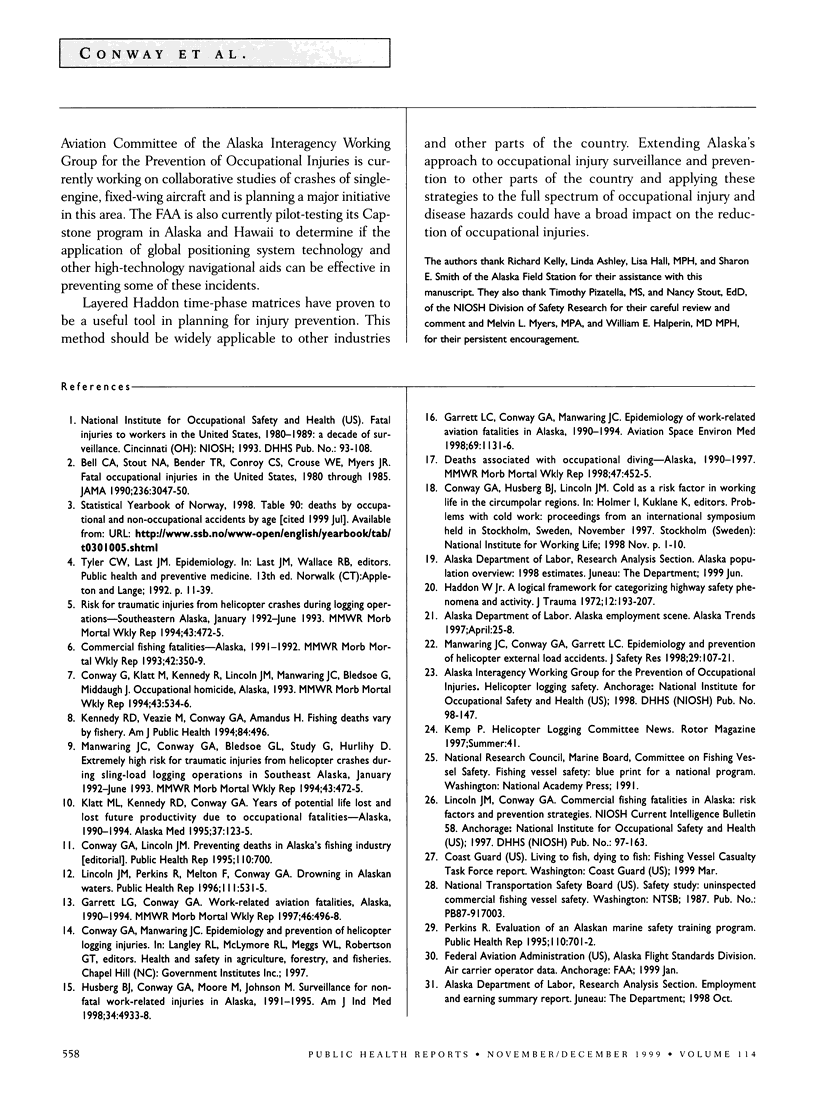
Selected References
These references are in PubMed. This may not be the complete list of references from this article.
- Bell C. A., Stout N. A., Bender T. R., Conroy C. S., Crouse W. E., Myers J. R. Fatal occupational injuries in the United States, 1980 through 1985. JAMA. 1990 Jun 13;263(22):3047–3050. [PubMed] [Google Scholar]
- Centers for Disease Control and Prevention (CDC) Risk for traumatic injuries from helicopter crashes during logging operations--southeastern Alaska, January 1992-June 1993. MMWR Morb Mortal Wkly Rep. 1994 Jul 8;43(26):472–475. [PubMed] [Google Scholar]
- Centers for Disease Control and Prevention (CDC) Work-related aviation fatalities--Alaska, 1990-1994. MMWR Morb Mortal Wkly Rep. 1997 Jun 6;46(22):496–498. [PubMed] [Google Scholar]
- Conway G. A., Lincoln J. M. Preventing deaths in Alaska's fishing industry. Public Health Rep. 1995 Nov-Dec;110(6):700–700. [PMC free article] [PubMed] [Google Scholar]
- Haddon W., Jr A logical framework for categorizing highway safety phenomena and activity. J Trauma. 1972 Mar;12(3):193–207. doi: 10.1097/00005373-197203000-00002. [DOI] [PubMed] [Google Scholar]
- Kennedy R., Veazie M., Conway G., Amandus H. Fishing deaths in Alaska vary by fishery. Am J Public Health. 1994 Mar;84(3):496–496. doi: 10.2105/ajph.84.3.496. [DOI] [PMC free article] [PubMed] [Google Scholar]
- Klatt M. L., Kennedy R. D., Conway G. A. Years of potential life lost and lost future productivity due to occupational fatalities--Alaska, 1990-1994. Alaska Med. 1995 Oct-Dec;37(4):123–125. [PubMed] [Google Scholar]
- Lincoln J. M., Perkins R., Melton F., Conway G. A. Drowning in Alaskan waters. Public Health Rep. 1996 Nov-Dec;111(6):531–535. [PMC free article] [PubMed] [Google Scholar]
- Perkins R. Evaluation of an Alaskan marine safety training program. Public Health Rep. 1995 Nov-Dec;110(6):701–702. [PMC free article] [PubMed] [Google Scholar]


